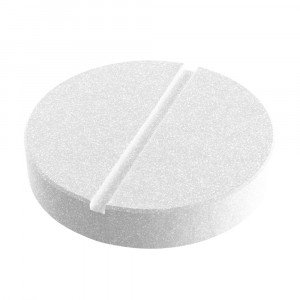 Welcome
Welcome
“May all be happy, may all be healed, may all be at peace and may no one ever suffer."
- A
- B
- C
- D
- E
- F
- G
- H
- I
- J
- K
- L
- M
- N
- O
- P
- Q
- R
- S
- T
- U
- V
- W
- X
- Y
- Z
Erythromycin (Oral) - Brands
Erythromycin belongs to the macrolides group of antibiotics. It exerts a bacteriostatic or bactericidal action based on specific interference with ribosomal protein synthesis within the bacterial cell. THROCIN is mainly used for the treatment of infections caused by penicillinase producing staphylococci. The following micro-organisms are particularly susceptible to Erythromycin. Gram (+)ve : Cocci and bacilli. Gram (-)ve : Neisseria catarhalis, N.meningitis, N.gonorrhoea, Haemophilus influenzae, Brodetella, H. pertussis.Other micro-organisms : Mycoplasma pneumoniae, Legionella pneumophila, Bacteroides fragilis, B.oralis, B.melaninogenicus, Fusobacterium, Chlamydia trachomatis, Treponema pallidum.
Pharmacology
Erythromycin inhibits microsomal protein synthesis in susceptible organisms by inhibiting the translocation process. Specific binding to the 50S subunit or 70S ribosome occurs in these organisms but there is no binding to the stable 80S mammalian ribosome. Erythromycin is active against many Grampositive bacteria, some Gram-negative bacteria and against mycoplasmas and chlamydia.
Absorption: Erythromycin base is destroyed by acid and is therefore administered in the form of stable ester. The rates of absorption of the base and esters are diminished by the presence of food. The stearate is hydrolyzed in the intestine and the free erythromycin absorbed.
Blood concentration: After an oral dose of 500 mg. of the base of stearate, peak serum concentrations of 0.9 to 1.4 or 0.4 to 1.8 mg/ml. respectively are attained in 1 to 4 hours. Half-life: The serum half-life is 1.2 to 4 hours. In subjects with oliguria, the half-life is about 5 hours.
Distribution: Erythromycin is widely distributed throughout body tissue and fluids with some retention in the liver and spleen, protein binding of erythromycin base is 73%. Erythromycin enters the cerebrospinal fluid when the meninges are inflamed. It also crosses the placenta and is excreted in the milk.
Excretion: 5 to 15 % of the dose of erythromycin is excreted in the urine and large amounts of the unchanged active substance are excreted in the bile.
To be happy, beautiful, healthy, wealthy, hale and long-lived stay with DM3S.

